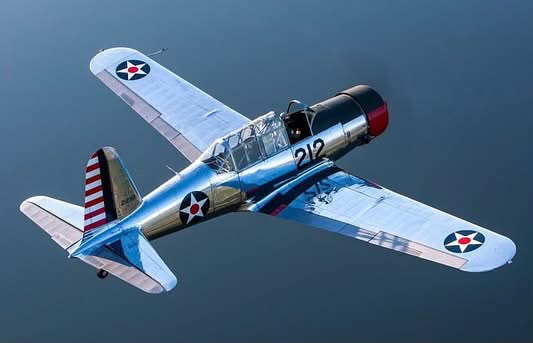Curtiss Junior
- J.K. Caldwell
- Jan 6, 2021
- 3 min read


First Impressions: I need a mad bomber hat and large handlebar mustache to properly fly the Curtiss Junior! This aeroplane looks like something from the set of “Those Magnificent Men in their Flying Machines”!
Design Features: What you see is what you get! This is a tandem seat parasol-winged open-cockpit taildragger. The fuselage is fabric covered 4130 chrome moly tubing with wood stringers. The wings are constructed from wood (including the spars) and fabric-covered and the exposed fuel tank is in front of the engine and pusher prop. This homebuilt Curtiss Junior is a replica of an original 1931 Curtiss-Wright Junior (CW-1). The replica I flew was modified 1 with Grove heavy duty aluminum gun-drilled spring landing gear and tailwheel. Powerplant: The primary difference between the original Curtiss-Wright Junior and the Curtiss Junior is substitution of the 120hp Lycoming O-235 for the original Szekely SR-3 three cylinder radial engine. This substitution is fine with me since the SR-3 had a tendency to throw cylinders, which is bad enough in any plane, but especially when the propeller is behind the engine. The propeller is a Craig Katto wood core composite fixed-pitch three blade.

Ergonomics: Step on a tire, then a fuselage-mounted peg before stepping onto the seat and lowering yourself in. There is plenty of legroom and no limitation on headroom other than how effective the windscreen will be in keeping the bugs out of your Cheshire Cat grin!

Startup/Taxi/Takeoff: There’s not much involved in the start and run-up of the O-235. Use the taxi time to adjust yourself to both the sight picture and the feel of riding on the nose of the aircraft. After run-up, line up on the runway, put in lateral stick correction for crosswinds, add full power, and be prepared for an appropriate amount of rudder. Add slight forward stick pressure to allow the tailwheel to raise slightly. Don’t try to force the Junior off the deck; let the wings do the flying for you.

Flying Qualities: It’s a little like. . . well, flying a canoe with wings from the front seat! The view is tremendous and unrestricted! This is an airplane that you fly by feel and sound. Slow flight the Junior to get a feel for elevator and aileron responsiveness while noting 2 what the wind sounds and feels like at and near stall speed. Because the pitot tube protrudes from the aircraft’s chin, the indicated airspeed can vary significantly with a side slip or rudder inputs. Whether or not you realize it, you are probably used to sensing side slip not only by the “seat-of-the-pants” feel, but also from the sight picture of the aircraft nose and how it moves from side to side. The biggest adjustment in the Curtiss Jr is the lack of a nose sight picture. Go to altitude and practice Dutch rolls on the horizon while glancing down to reference the ball on the slip indicator. This practice will pay dividends when landing.

Landing: There are no fuel pumps, flaps, landing gear to mess with so when you’re abeam the numbers, pull the throttle back to around 1500 rpm and slow the plane down. This airplane will sink at a significant rate with power off so plan a power-on stabilized approach until the flare. The three point sight picture is actually very nice for a taildragger in that you can still see what’s in front of you! Once on deck, keep feeding aileron into the wind while planting the tailwheel firmly on the ground with full aft stick. What is also different about this taildragger from others is that the pilot’s seat is well forward of the CG. That makes the “seat-of-the pants” feel more pronounced when the nose of the aircraft begins to drift left or right. This plane definitely requires positive and timely rudder inputs and is a challenge to put on deck in hefty crosswinds. Finally, be cognizant of the fact that a rapid application of throttle can cause a slight pitch down attitude due to the pusher 3 prop being aft and higher than the CG. Being smooth with throttle and elevator control make this a non-issue.

Wrap-up: The Curtiss Junior is a blast of open-cockpit, wind in your face, and seat-of-the-pants flying but it is not a beginners plane! However, if you’ve got a leather helmet, flying goggles, a large mustache and the necessary skills, this just may be the flying machine for you!

.png)




As a follow-up, this Curtiss Jr replica was built from original Curtiss plans and finished in 2002. It currently resides in central CA and is for sale (although not currently listed).